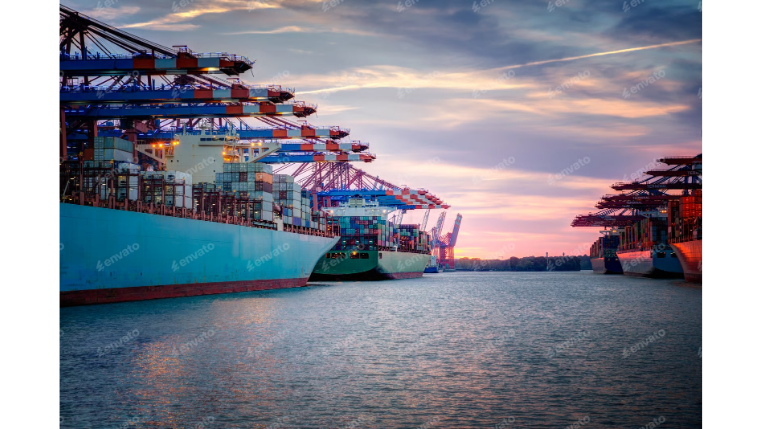Supply Chain Fundamentals




300+
Trusted By 300+ Companies

29 Oct 25
What Is SCAC Code? 2024 List Lookup, Who Needs and How It Works
In the complex world of freight and transportation, a single, four-letter code holds immense power: the SCAC Code. This unique identifier for transportation companies is the backbone of modern logistics, facilitating everything from customs filings to seamless cargo tracking. This comprehensive guide explores what an SCAC code is, its vital role in the 2024 supply chain, who needs one, and how it works to ensure efficiency and compliance.
Read More

06 Oct 25
Understanding Spot Freight: Definition and Benefits
Spot freight gives businesses the flexibility to move cargo without long-term contracts, making it ideal for urgent or fluctuating shipping needs. Unlike contract freight, spot freight operates on a load-by-load basis, allowing shippers to access available carrier capacity and competitive market rates. This guide explains how spot freight works, its advantages like cost savings and responsiveness, as well as factors and tips to consider for smooth operations. With Modaltrans, businesses can optimize spot freight for efficient and transparent logistics.

06 Oct 25
Understanding Customs Declarations: How to Navigate International Shipping
Customs declarations are critical for moving goods across borders. This guide explains their role in compliance, details the key shipping documents required, and shares tips for avoiding costly mistakes. By understanding customs rules and preparing accurate paperwork, shippers can ensure faster clearance, fewer delays, and more efficient international trade.

06 Oct 25
Understanding the Purpose of HS Codes
HS codes are a standardized classification system that ensures smooth customs clearance, accurate tariffs, and regulatory compliance. By understanding HS codes, businesses can avoid delays, reduce penalties, and strengthen their global trade operations.

09 Oct 25
Incoterms 2025: An In-Depth Guide to Meaning
Incoterms 2025 are standardized global trade rules that define delivery, cost, and risk responsibilities between buyers and sellers. By using Incoterms 2025 effectively, businesses can reduce disputes, streamline customs, and strengthen international trade operations.

09 Oct 25
Streamline Your Logistics: The Benefits of a Freight Forwarder
In the complex world of global trade, managing the journey of goods from origin to destination is a monumental task. For many businesses, navigating customs regulations, negotiating with carriers, and handling endless paperwork can divert focus from core operations. This is where a freight forwarder becomes an indispensable partner. Acting as the architect of your logistics, they provide the expertise and network to streamline your entire shipping process. This article explores the key advantages of working with a freight forwarder, from saving time and money to enhancing overall supply chain resilience and customer satisfaction.

09 Oct 25
Understanding DAP vs DDP: Key Differences Explained
In international trade, the three-letter codes known as Incoterms are the universal language defining the responsibilities of buyers and sellers. Among the most common yet frequently confused terms are DAP (Delivered at Place) and DDP (Delivered Duty Paid). While they both sound similar, the distinction between them is critical, involving major differences in risk, cost, and customs obligations. This guide will clearly break down the roles of each party under both terms, helping you decide which one is the right strategic fit for your next shipment.

09 Oct 25
Proforma Invoice vs Commercial Invoice: What's the Difference?
In the language of global trade, both the proforma invoice and the commercial invoice are critical documents, yet they serve distinctly different purposes. While they may look strikingly similar, confusing them can lead to customs delays, payment disputes, and compliance issues. The proforma invoice acts as a preliminary quotation—a "good faith" agreement before a sale is finalized. In contrast, the commercial invoice is the official, legally binding bill of sale issued after the transaction is complete. This guide will compare their functions, timing, and legal implications to help your business navigate international trade with clarity and confidence.

09 Oct 25
A Comprehensive Guide to Shipper's Letters of Instruction
In international shipping, clear communication is the key to a smooth journey for your cargo. The Shipper’s Letter of Instruction (SLI) stands as one of the most vital documents in this process, acting as a comprehensive instruction manual and formal contract between a shipper and their freight forwarder. This blog explains exactly what an SLI is, breaks down its essential components, and underscores why pinpoint accuracy is critical for avoiding costly delays and compliance headaches. By mastering the SLI, your business can ensure its instructions are executed flawlessly, reducing risk and building a more efficient global logistics operation.
.avif)
.avif)


